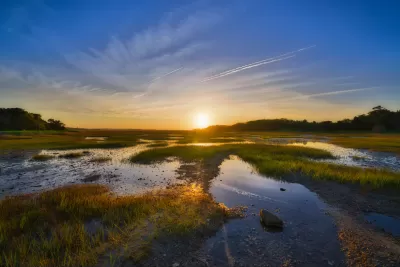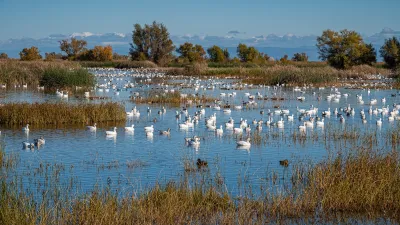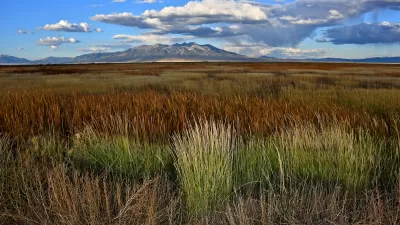A recent ruling ‘dramatically’ restricts the law’s reach when it comes to protecting wetlands.

Writing in Politico, Annie Snider describes the decision in Sackett v. EPA, a Supreme Court ruling that will dramatically limit the scope of the 1972 Clean Water Act.
As Snider explains, “The Sackett case centers on a patch of wetlands on property owned by Chantell and Michael Sackett near Priest Lake, Idaho. The couple, who had planned to build their dream home on the property, have been tangling with EPA and the Army Corps of Engineers for a decade and a half over whether it should be subject to Clean Water Act permitting requirements.”
The justices agreed that the wetlands on the couple’s property should not be subject to regulation, but the majority decision ruled that “only those wetlands with a continuous surface water connection to larger streams, lakes and rivers would get federal protections,” drastically reducing the reach of the regulations.
President Biden disagreed with the 5-4 ruling, saying that the decision “defies the science that confirms the critical role of wetlands in safeguarding our nation’s streams, rivers, and lakes from chemicals and pollutants that harm the health and wellbeing of children, families, and communities.”
Snider adds that “The Biden administration must now decide how to proceed. At a minimum, the regulation it finalized in January will need to be reworked in light of the new ruling. That rule is currently in effect in fewer than half of the states; the other half are covered by judicial freezes.”
FULL STORY: Supreme Court dramatically shrinks Clean Water Act’s reach

Study: Maui’s Plan to Convert Vacation Rentals to Long-Term Housing Could Cause Nearly $1 Billion Economic Loss
The plan would reduce visitor accommodation by 25,% resulting in 1,900 jobs lost.

North Texas Transit Leaders Tout Benefits of TOD for Growing Region
At a summit focused on transit-oriented development, policymakers discussed how North Texas’ expanded light rail system can serve as a tool for economic growth.

Why Should We Subsidize Public Transportation?
Many public transit agencies face financial stress due to rising costs, declining fare revenue, and declining subsidies. Transit advocates must provide a strong business case for increasing public transit funding.

How Community Science Connects People, Parks, and Biodiversity
Community science engages people of all backgrounds in documenting local biodiversity, strengthening connections to nature, and contributing to global efforts like the City Nature Challenge to build a more inclusive and resilient future.

Alabama: Trump Terminates Settlements for Black Communities Harmed By Raw Sewage
Trump deemed the landmark civil rights agreement “illegal DEI and environmental justice policy.”

Dear Tesla Driver: “It’s not You, It’s Him.”
Amidst a booming bumper sticker industry, one writer offers solace to those asking, “Does this car make me look fascist?”
Urban Design for Planners 1: Software Tools
This six-course series explores essential urban design concepts using open source software and equips planners with the tools they need to participate fully in the urban design process.
Planning for Universal Design
Learn the tools for implementing Universal Design in planning regulations.
City of Santa Clarita
Ascent Environmental
Institute for Housing and Urban Development Studies (IHS)
City of Grandview
Harvard GSD Executive Education
Toledo-Lucas County Plan Commissions
Salt Lake City
NYU Wagner Graduate School of Public Service





























